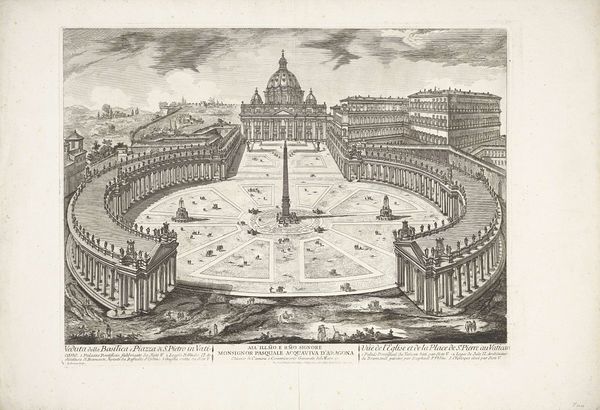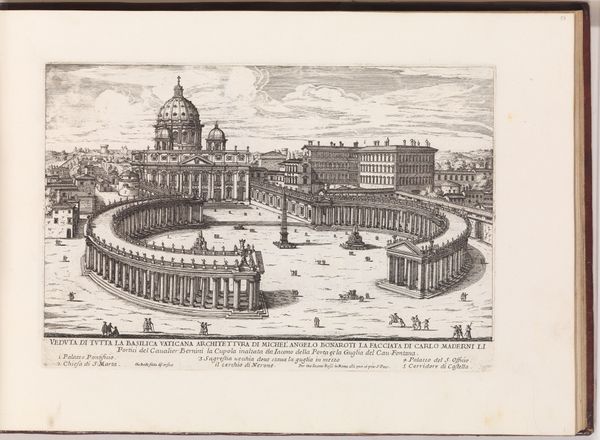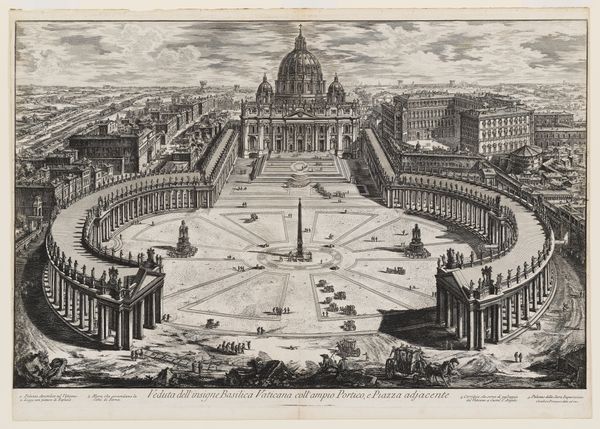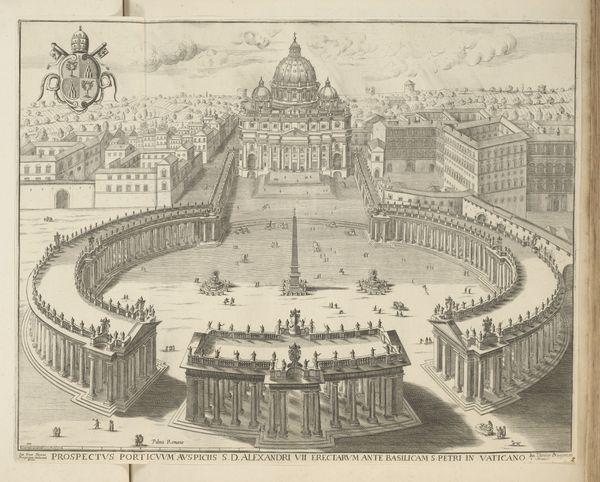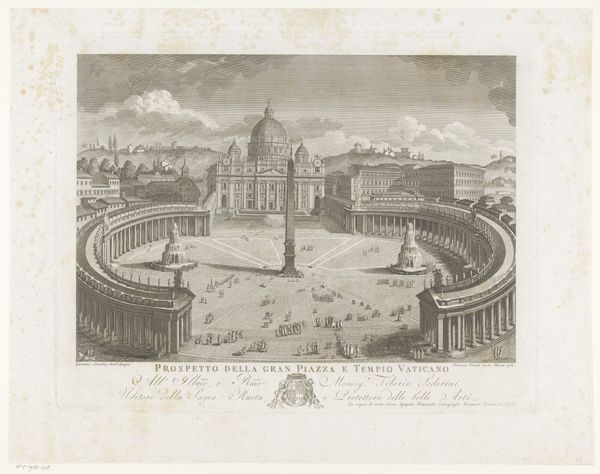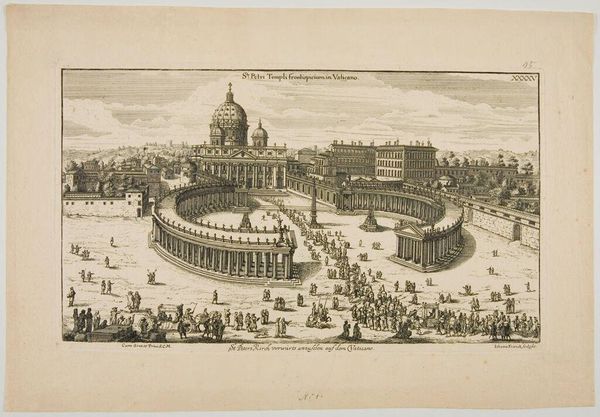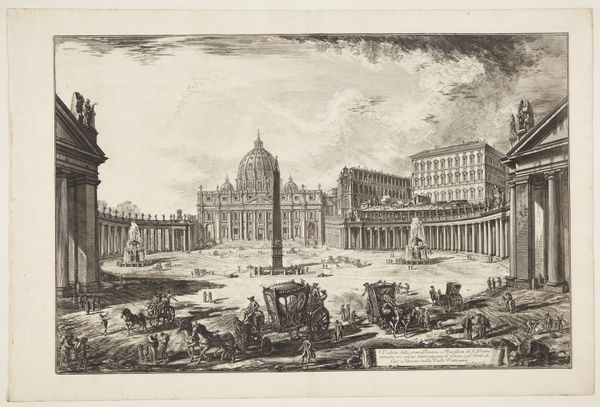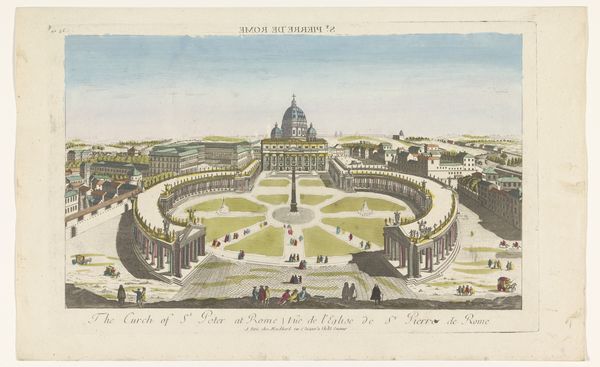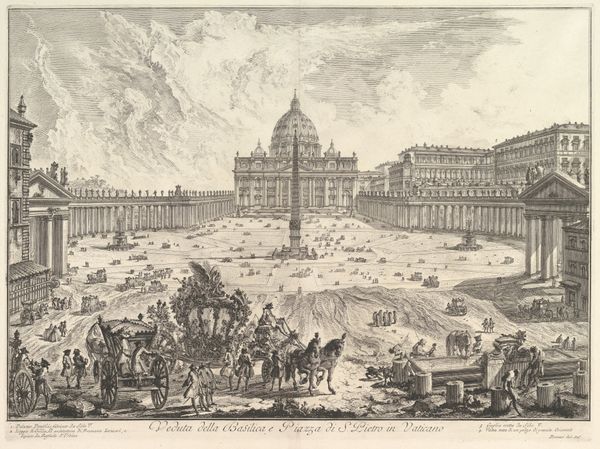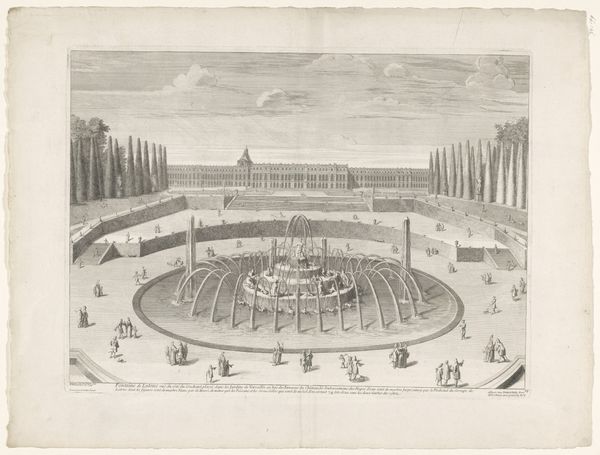
Gezicht op het Sint-Pietersplein te Vaticaanstad 1578 - 1678
0:00
0:00
giovannibattistafalda
Rijksmuseum
print, engraving, architecture
#
baroque
# print
#
landscape
#
cityscape
#
islamic-art
#
italian-renaissance
#
engraving
#
architecture
Dimensions: height 482 mm, width 629 mm
Copyright: Rijks Museum: Open Domain
Curator: This engraving is entitled "Gezicht op het Sint-Pietersplein te Vaticaanstad," which translates to "View of Saint Peter's Square in Vatican City". The artist is Giovanni Battista Falda, and the print is dated sometime between 1578 and 1678. It resides here at the Rijksmuseum. Editor: Immediately, I’m struck by the sheer ambition of the project depicted. The lines of the engraving create a palpable sense of grandeur and meticulously planned urban space. The medium amplifies this controlled vision; you can almost feel the engraver's hand, repeating lines with incredible discipline. Curator: Absolutely. The piece offers insight into how the Papal States used visual imagery to assert power and project an image of stability during a tumultuous period. Notice how St. Peter's Basilica dominates the cityscape, underscoring the Church's centrality. It's as much about papal authority as it is about urban design. Editor: And how this authority is physically manufactured. Consider the resources consumed: the quarrying of stone, the skilled labor of countless artisans, the trade networks necessary to move materials. The print flattens these processes, presenting a seemingly effortless spectacle of power, but the materiality speaks of tremendous effort. Curator: It also represents the evolution of printmaking and its function. Prints like this became instrumental in disseminating architectural ideas and showcasing Rome's urban achievements throughout Europe. These engravings allowed individuals who might never visit Rome to experience its grandeur, impacting their perceptions of the papacy. Editor: A perfect example of the social agency of reproducible media. Furthermore, I find it fascinating to consider how the consumption of prints like this one might reinforce class structures. Acquiring this image signifies a certain level of literacy and disposable income. It serves to visualize power but also participates in its complex maintenance and circulation. Curator: I agree. It encapsulates the fascinating interplay between artistic representation, social structures, and the ever-evolving role of the Church in early modern Europe. Editor: Yes, a compelling demonstration of how material objects mediate political and religious influence. A window into both the spiritual and earthly powers at play.
Comments
No comments
Be the first to comment and join the conversation on the ultimate creative platform.
